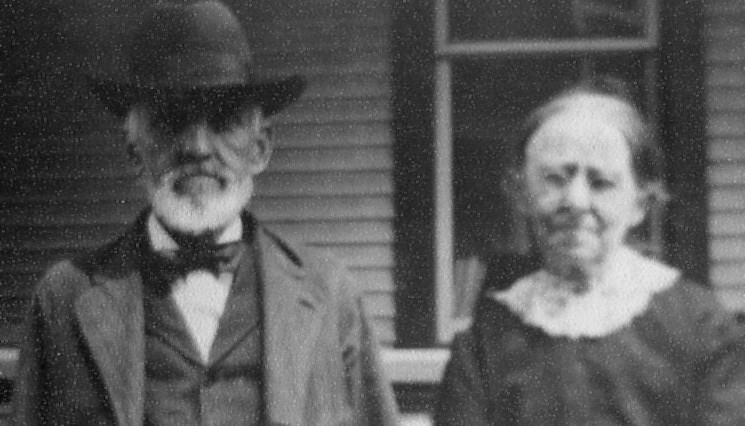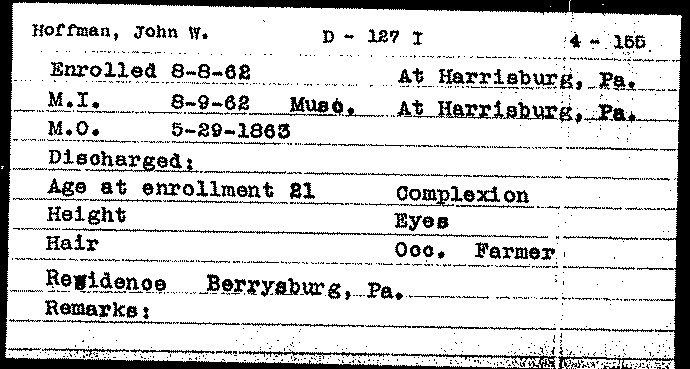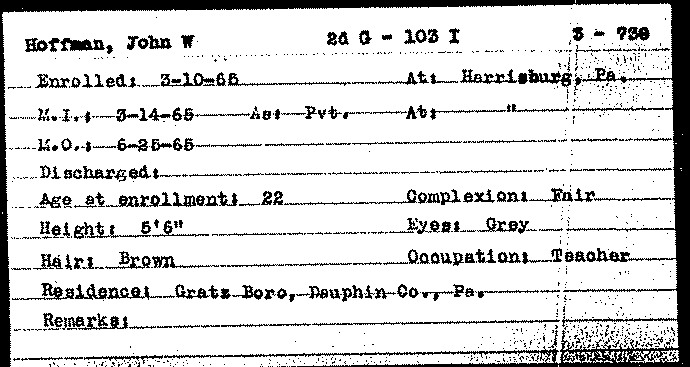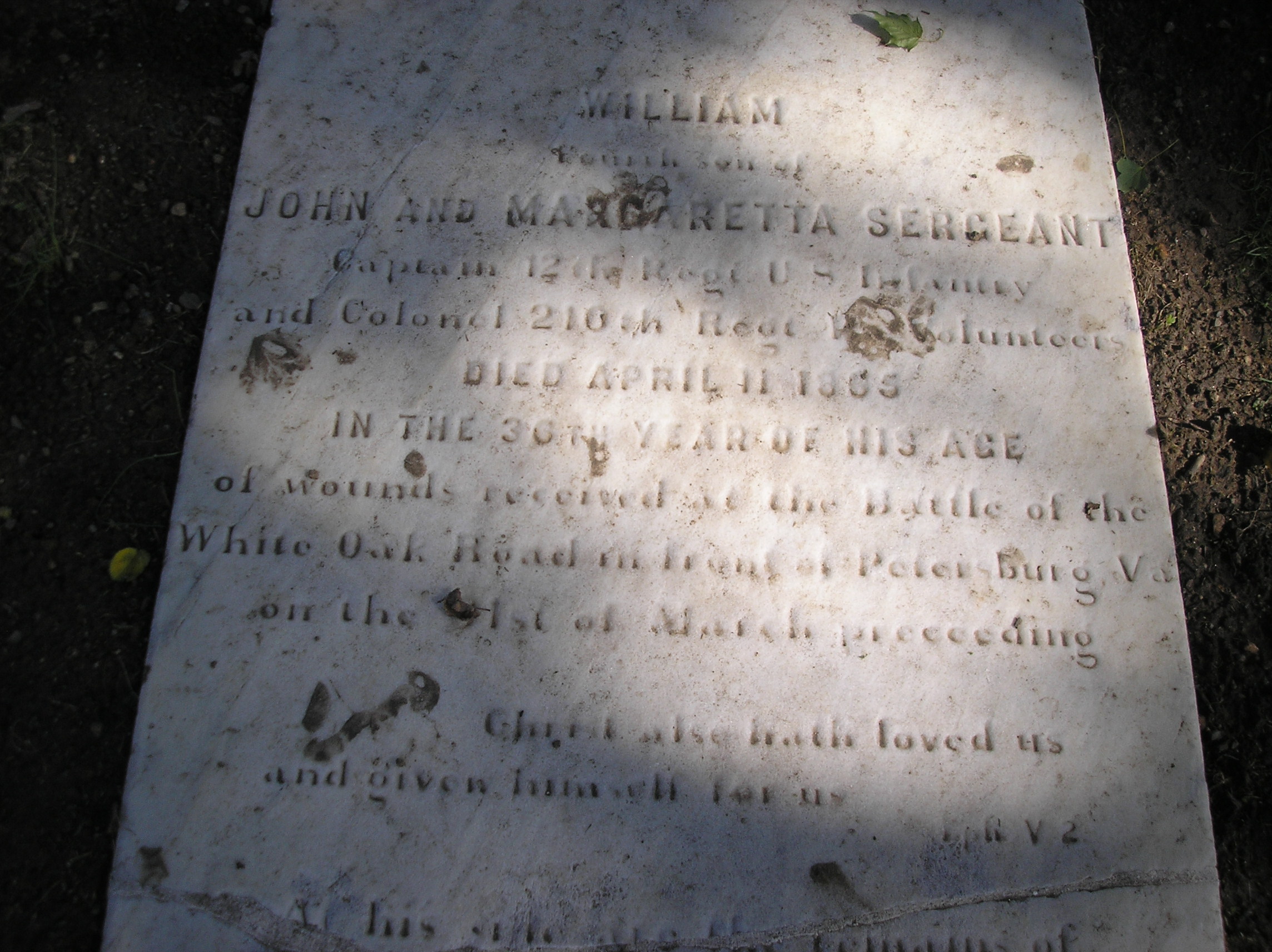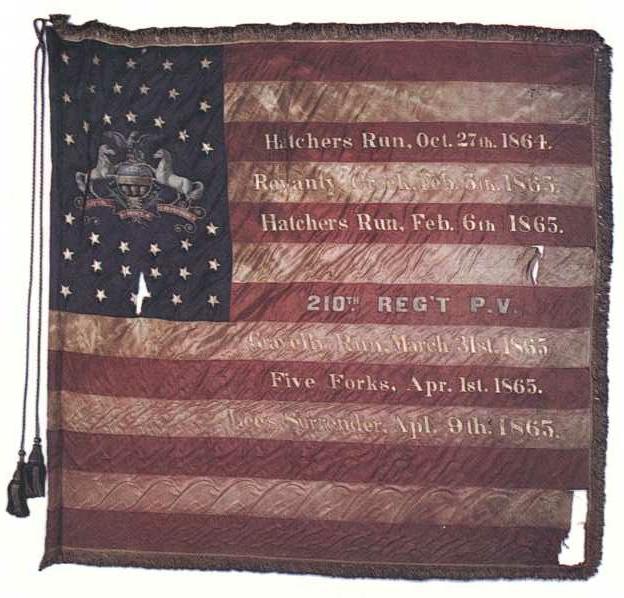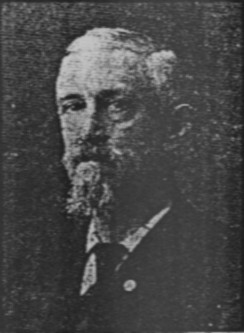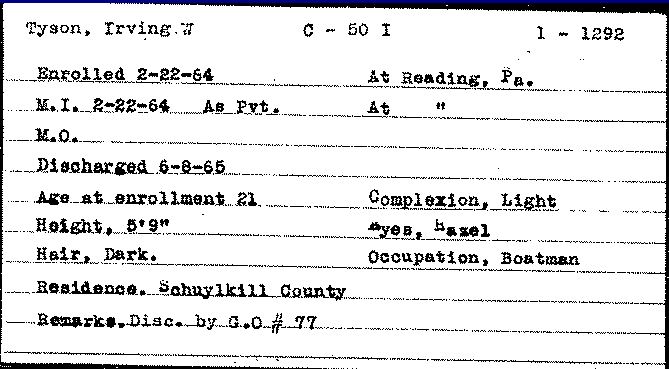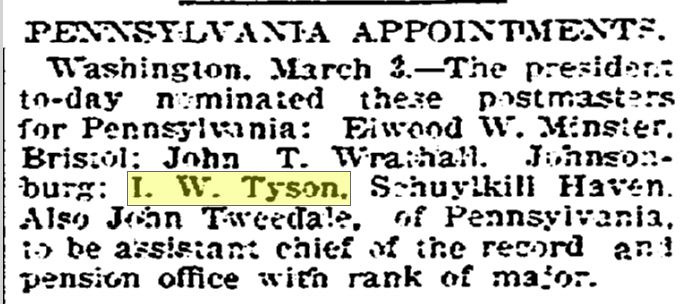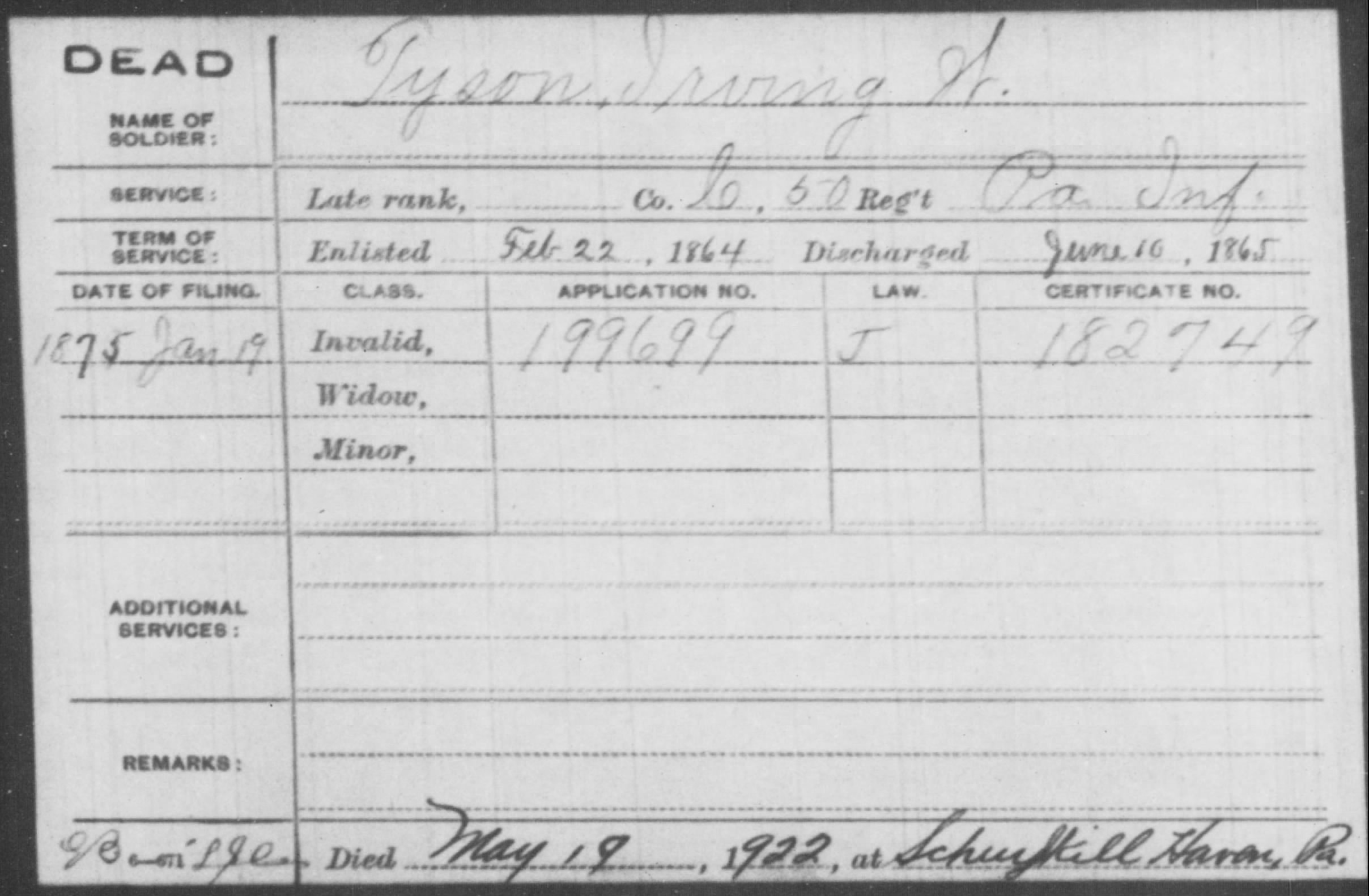John W. Hoffman – Teacher, Farmer, and Stockman of Gratz and Lykens Township
Posted By Norman Gasbarro on January 12, 2013
John W. Hoffman had two enlistments during the Civil War. In the first, he served as a Musician in Company D of the 127th Pennsylvania Infantry, and in the second, he was a Private in the 103rd Pennsylvania Infantry, Company G, serving on Roanoke Island, eventually being discharged at New Bern, North Carolina, 25 June 1865. The portrait of John W. Hoffman and his wife Amanda [Gise] Hoffman (above) was taken in the early twentieth century in Gratz and was provided by a descendant.
A sketch on John W. Hoffman appeared in the Commemorative Biographical Encyclopedia of Dauphin County, published by the J. M. Runk Company of Chambersburg in 1896 [Note: Click on title for free download].
John W. Hoffman, farmer and stockman, Gratz, Pennsylvania, was born in Gratz, Lykens Township, Dauphin County, Pennsylvania, 8 March 1843. His father, Henry C. Hoffman, was born in Columbiana County, Ohio, and came when a young man to Harrisburg, Pennsylvania, where he worked as a carpenter for Mr. Holman. He afterwards came to Lykens Township, and worked at his trade at Gratz, where he spent the remainder of his life, and died in 1878. He was married, in Gratz, to a native of that place, Sarah Welker, daughter of John Welker. Their children were: Sarah Hoffman, wife of John B. Hoke, Pottsville, Pa.; John W. Hoffman; Elizabeth Hoffman, wife of F. Heitzman, Shamokin, Pennsylvania; Hannah Hoffman, wife of John Eisenhart; Ellen Hoffman, wife of George Reed, Valley View, Pennsylvania; Rebecca Hoffman, wife of Amos Kissinger; James F. Hoffman, resides in Gratz; Amelia Hoffman, wife of John Getler, Pottsville, Pennsylvania; Mary Hoffman and Samuel Hoffman, both deceased, and three children who died in infancy.
Mr. Hoffman took an active part in politics, first as a Whig and subsequently as a Republican. He held various township offices, as auditor, etc. He was an official member in the Reformed Church, serving as deacon, elder and in other church offices. His wife was a member of the same church. She died in Gratz in 1881.
John W. Hoffman attended school for a short time each winter, and worked on the farm of Daniel P. Stine every summer from his ninth to his sixteenth year. He also attended Freeburg Academy, Snyder County, for two terms. By this course, together with diligent private study and reading, he prepared himself for the work of teaching, and taught school twelve terms, ten of which were in the winter season.
Mr. Hoffman learned carpentry with his father, and worked as a journeyman until the war broke out. He enlisted at Harrisburg in August 1862, in Company D, One Hundred and Twenty-Seventh Pennsylvania volunteers [127th Pennsylvania Infantry], Col. W. W. Jennings and Capt. J. B. Keene. He was ordered to Washington, D.C., and remained at Arlington Heights until 1 December, when he marched with his company to Fredericksburg, and on 13 December 1862, participated in the battle fought there. He was afterwards sick for seven weeks, and remained there all winter. He was in the battle of Chancellorsville, 3 May 1863. and in the four days’ fight there. His term of enlistment having expired, he returned home in June 1863, and remained there until April 1865, when he again enlisted, this time for three years, at Harrisburg. He was sent to Roanoke Island, where he performed close guard duty. He was mustered out at the expiration of the war, and was left with impaired health, resulting from exposure in service. Returning to Gratz, Mr. Hoffman taught school until 1878. He then bought a farm of fifty-two acres in the Snyder mill property, on which there was only an old frame house. He built on this place a good dwelling house and barn, costing over $2000, and made other valuable improvements. In 1889 he bought the Shade farm of fifty-two acres, and has since cultivated the one hundred and four acres, on which he has been extensively engaged in raising stock.
John W. Hoffman was married in Lykens Township, January 17, 1867, to Amanda Guise [also found as Amanda Gise], born in that township 30 December 1847. Their children were: Edwin Hoffman, tinsmith, Valley View, Pennsylvania; Harry W. Hoffman, farmer, on the homestead, married Edna Daniel, of Lykens Township; Mary Hoffman, wife of Isaac Troutman; Martha Hoffman, unmarried; Stephen Hoffman, Charles G. Hoffman, Clarence Hoffman and Ellie Hoffman, all at home, and Emma C. Hoffman, who died at five years of age. Mr. Hoffman is a member of Kissinger Post, No. 376, G.A.R. He is a Republican, active in party movements and deeply interested in township affairs. He was school director for a number of years. For seventeen years he was secretary of the Dauphin County Fair. He is also much interested in church matters. He is a member of the Reformed Church, in which he was for years Sunday-school teacher and superintendent. He is a live man in all public and social concerns, active in promoting the welfare of the community. [pages 889-890].
John W. Hoffman died on 12 May 1926 and is buried in the Gratz Union Cemetery. Previously on this blog, he was featured in a post on the William H. Yohe house in Gratz (Gratz During the Civil War), a post on the Gratz Union Cemetery (Gratz During the Civil War), a post on the first public school in Gratz (Gratz During the Civil War), and a post on the 103rd Pennsylvania Infantry (The 2nd Company G).
Pennsylvania Veterans’ Index Cards, available from the Pennsylvania Archives for his two enlistments, are shown below:
From the cards it is learned that John W. Hoffman stood 5 foot, 6 inches tall, had a fair complexion, gray eyes, and brown hair. His occupations, both as teacher and farmer, reflect the time of year of his enlistment – the summer of 1862, he was engaged as a farmer, and the winter of 1865 as a teacher.
The “W” in John W. Hoffman‘s name is believed to stand for Welker, the maiden name of his mother.
John W. Hoffman‘s ancestry has not yet been connected to the Hoffman family of Johann Peter Hoffman (1709-1797), an early settler in the Lykens Valley – as stated above in the biographical sketch that John’s father migrated east to the Lykens Valley from Ohio. It is possible that his mother, Sarah [Welker] Hoffman, has a connection to Johann Peter Hoffman though through her ancestry, which includes the Jury family, her paternal grandmother being Susanna [Jury] Welker (1755-1801), a daughter of Abraham Jury (1718-1785), an immigrant from Switzerland, who was an early settler in Upper Paxton Township, Dauphin County.
John W. Hoffman‘s wife, Amanda Gise, is connected to Heinrich Umholtz (1745-1829), an immigrant from Switzerland who settled in the Lykens Valley. Heinrich was her great-grandfather. These genealogical connections, namely through the Jury and Umholtz families, provide for many interesting cousin and in-law relationships and connections with scores of other Civil War veterans from the Lykens Valley area. In addition, Amanda’s older brothers, Joseph D. Gise (1834-1908) and John B. Gise (1840-1915) served in the Civil War.
Additional information is sought on John W. Hoffman‘s Civil War service, his ancestral roots, his descendants, and his role in the development of education and farming in the Lykens Valley. Pictures and stories are particularly welcome! Readers are invited to make comments to this post or e-mail information to the Civil War Research Project.
 ;
;
